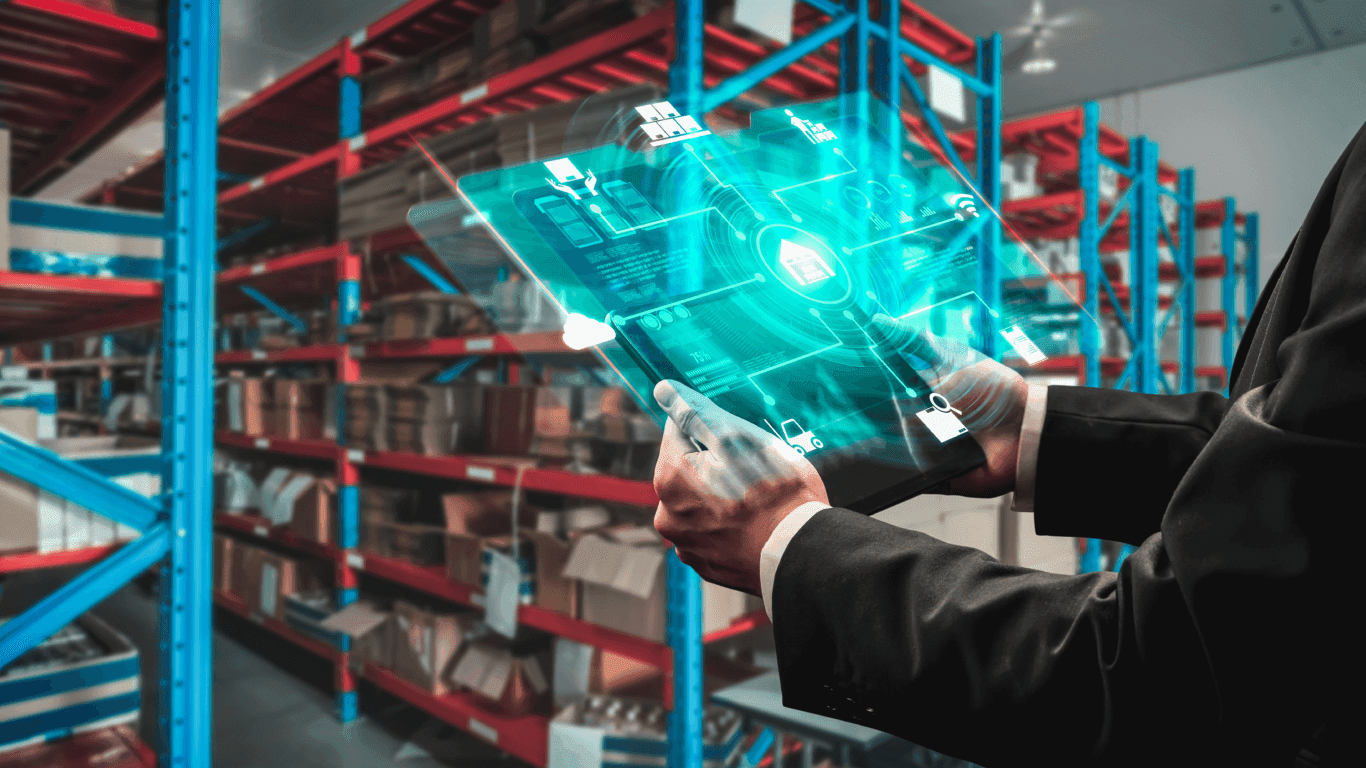Integrating IOT for Enhancing Supply Chain Visibility
Unlike traditional way of keeping the track on inventory, shipment etc. Integration of IOT is quite beneficial and one track and monitor each and everything on assets.

Internet of Things(IoT): What is it?
IoT is a vast ecosystem of interconnected physical objects, such as gadgets, home appliances, vehicles, and sensors, all embedded with technology that enables seamless data collection and exchange over the internet or other networks. In India the use of IoT is increasing as the 5G has spread across the country making it demanding to have a knowledgeable person who knows the IoT and its technology deeply. IoT allows seamless communication between people, processes and things automating tasks, improving efficiency and helps to make informed decisions.
Integration of IoT in supply chain management is a blessing as it gives precise data on the asset and you can take action on how we can deliver if something goes wrong.
Real-time tracking: GPS tracker and RFID enable continuous monitoring of goods throughout the supply chain that provides you the exact location data and reduces the risk of loss or theft.
Enhanced visibility and transparency: Stakeholders can have access to real-time information about the product status, movement and storage conditions that gives you better decision-making and increased trust.
Automated Inventory Management: Use of IoT automated stock monitoring and reordering, minimizes the manual errors, reduces stockouts or overstocking and optimizes warehouse operations.
Condition Monitoring: Sensitive goods like food and pharmaceuticals can check the product quality by fitting the sensor that tracks environmental factors like temperature and humidity during storage and transit.
Predictive Maintenance: IoT sensors monitor equipment health, enabling productive maintenance to prevent unexpected breakdown and reduce downtime.
Improved Efficiency and productivity: Using IoT in supply chain operation helps in reducing the work load like automating routine tasks and real-time data insights streamline processes, speed up operations and cut operational costs.
Better Contingency Planning: IoT data enables managers to predict and address disruptions like delays, accidents, or severe weather conditions, thereby enhancing the robustness and adaptability of the supply chain.
Optimized logistics and route planning: IoT-driven analytics helps in optimizing delivery routes and schedules, reduces fuel costs and shipment delays.
Enhanced Customer Satisfaction: Improves transparency between customers establishing higher satisfaction and loyalty by accurate tracking and timely updates.
Data-driven decision-making: By providing valuable real-time data, IoT empowers advanced analytics that drive accurate demand forecasting, effective risk mitigation, and ongoing optimization of supply chain processes.
Data fragmentation: Data is frequently distributed among various platforms, complicating efforts to achieve seamless integration and comprehensive supply chain visibility.
Technology compatibility: Technology that has become outdated or incompatible systems can hinder real-time tracking and limit the effectiveness of IoT solutions.
Data security and privacy: With IoT devices amassing vast data sets, there is increased risk of unauthorized access, cyberattacks, and challenges in maintaining compliance with privacy standards.
Supplier collaboration: Gaining full visibility requires collaboration among all supply chain partners, without transparency or willingness to share data, delays and errors may occur.
Data quality and accuracy: Improper data or poor-quality data can provide errors in tracking, inventory management and decision-making, reducing trust in IoT-driven systems.
Scalability and complexity: Expansion of IoT solutions across large areas leads to technical complexity and requires robust infrastructure.
Regulatory compliance: Meeting industry and government regulations for data handling, reporting, and product traceability is increasingly complex and critical for avoiding penalties.
Cost considerations: Integrating IoT in logistics can be expensive for smaller organizations and also maintenance costs is too expensive to bear.
Change management: A lack of enthusiasm for adopting modern tools and processes among stakeholders can impede the successful integration of IoT and limit its positive impact.
IoT technologies significantly enhance supply chain resilience by providing real-time visibility into where products are, how they're in condition, and how they're being transported through sensors, RFID tags, and GPS monitors. This visibility provides organizations with the ability to immediately detect and address disruptions such as equipment breakdowns, environmental changes, or logistical hiccups, lowering operational risks. Predictive analytics powered by IoT information allows businesses to forecast demand, align inventory with it, and prepare for unplanned shortages, thus making supply chains more responsive and dynamic. Smart contracts and automated alerts also make the operations smoother, reducing manual intervention and errors. IoT also facilitates collaboration among supply chain partners by sharing true real-time information, which helps improve decision-making and overall efficiency. These aspects not only make supply chain continuity during unplanned interruptions better but also facilitate sustainability by way of optimized use of resources and waste reduction.
The addition of IoT to supply chains transforms visibility because it makes real-time tracing, data-driven decision-making, and proactive decision-making possible. Enhanced transparency not only simplifies processes and reduces risks but also promotes better cooperation among partners and leads to greater efficiency, resilience and customer satisfaction across the supply chain.
More blogs
No More blogs
